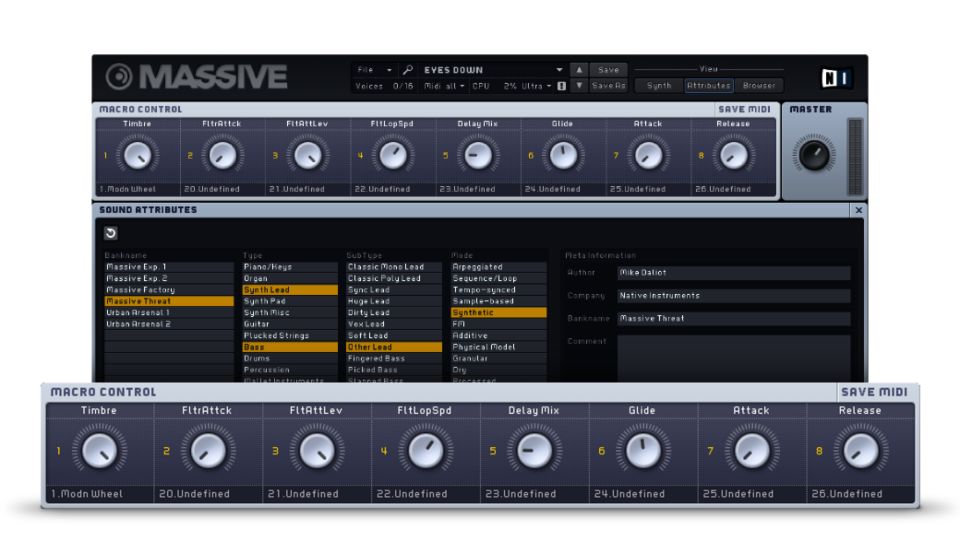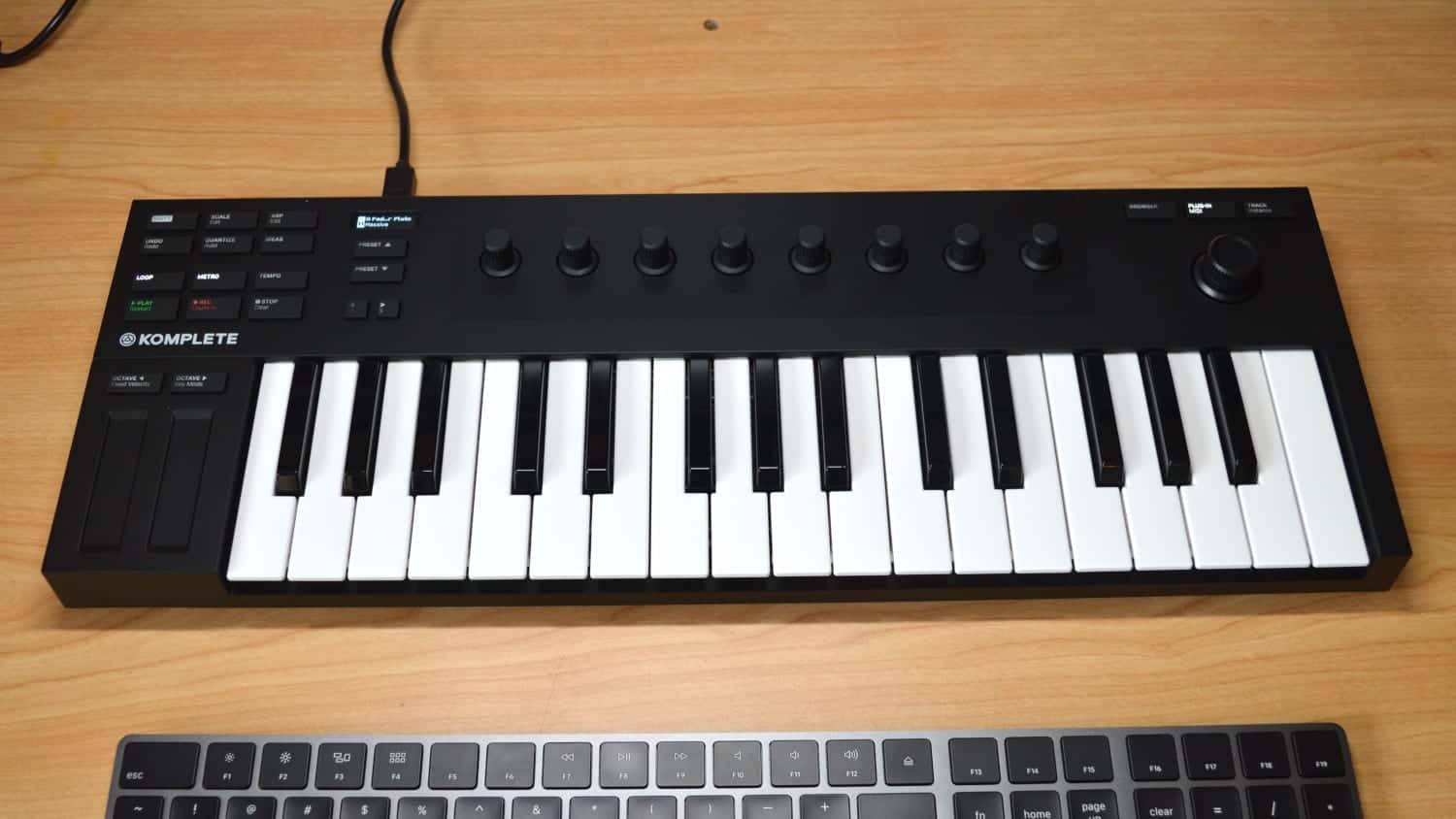

- Massive native instruments midi full#
- Massive native instruments midi software#
- Massive native instruments midi plus#
The built-in audio interface, meanwhile, operates at 44.1 kHz/24-bit in standalone but can go up to 96 kHz/24-bit when connected to a computer. There are additions, though, with an added pair of USB inputs on the rear and an SD card slot along the side - which comes equipped with a high-speed 64GB card.
Massive native instruments midi plus#
I/O along the rear is broadly the same as that found on the Mk3, with two TRS inputs, a dynamic mic input, two TRS main outputs, stereo headphone out, an expression pedal input plus MIDI In and Out. Firstly, Maschine+ comes encased in an anodized aluminium case that gives it a slightly shinier look but also feels considerably more robust than its plastic counterpart. This latest Maschine comes equipped with a controller mode, whereby it can act as an audio interface and MIDI controller for the desktop version of the Maschine 2 software.ĭespite looking and functioning much like the Mk3, unsurprisingly there are some technical differences to the hardware itself.

Massive native instruments midi software#
Seeing as both the controller layout and software architecture are near identical to that of the Mk3, we’ll skip the discussion of the core workflow in favour of highlighting what’s different here.
Massive native instruments midi full#
As with those competitors, this latest Maschine comes equipped with a controller mode, whereby it can act as an audio interface and MIDI controller for the desktop version of the Maschine 2 software.Īs such Maschine+ isn’t so much an alternative to the standard Maschine setup as it is an expansion keeping the full features of the existing studio workflow but letting users unplug from the computer too. Much like its closest rivals, Akai’s standalone MPCs One and Live, Maschine+ isn’t a purely standalone instrument.

With Maschine+, you can sample, sequence, compose with soft synths, perform and even work with external hardware and, crucially, in our time using the device, at no point have we felt significantly hindered by the lack of a mouse, keyboard or full laptop screen. While there are some significant limitations compared to the desktop version - which we’ll come to shortly - on the whole, this is the bonafide Maschine experience in standalone format. Let’s get this out of the way early - as a concept, Maschine+ works. The keybed is actually very nice feeling to me too.Īnyway it's a personal preference on what you need/want and the ideas on how you plan to use it.It’s testament to the tight hardware-software synergy of that controller design that you can effectively remove the computer from the equation without hampering the capabilities. I also set things up so that relevant controls like Amp envelopes, or filter controls, are on every page in the same place so that I can adjust them while making edits to an oscillator for example.įor me it's just all of the visual feedback you get from Novation controllers and how is this can be harnessed to create a quick workflow. So I know if there are 3 lights on then I am editing Oscillator 2. After using for a while you get used to how many lights are on for what. Rows of buttons I light up a certain amount for each page (by assigning QWERTY commands to the buttons) so I can quickly see that there are 4 lights that are on, so I'm on page 4 for example. Since there are way more controls than needed for each page I use them for other purposes. is Oscillator 1, page 3 Oscillator 2, etc. is Performance controls and things I want quick access to. I setup things with my controller so that each page is a different part of the synth. I'm a fan of the Novation stuff simply because Automap is really easy to use, and having a screen on the hardware really lets you take your eyes away from the computer and focus more on the sound.


 0 kommentar(er)
0 kommentar(er)
